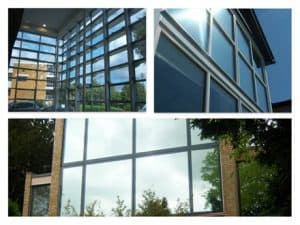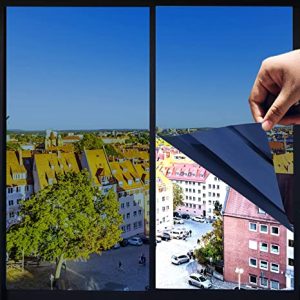CWS Solar Films Works
Everyone has sat next to a window in an office or other environment in which the sun’s rays penetrate the glass causing an uncomfortable heat that can’t be controlled unless you move elsewhere.
This can even happen in the dead of winter in a cold climate where you’d think the sun rays would feel good. But the searing heat gain coupled with heat from the building’s HVAC system can make it intolerable to sit at a desk near a window.
Not only do penetrating sun rays make for an uncomfortable work environment, the heat causes havoc with a building’s HVAC system, spiking utility bills. Also, with the HVAC system is out of whack, while it might be hot on one side of the office, it can be unusually cold on the other side, making it uncomfortable for people working there as well.
Some building owners think one remedy is to install blinds or shades. That can help alleviate the sun problem but it means the view out the window has been eliminated which can turn an office building into a cave-like atmosphere. So, the best way to fix the problem without taking away the view is to install heat-reducing window films. These films, known as solar control or sun control window films, are coated with materials that reflect away the sun’s heat. They also reduce the brightness of the sun and virtually eliminate ultraviolet light. And the view outside remains so you are getting the best of both worlds.
There are two types of heat-reducing window films: interior and exterior. Exterior films which are not common, are effective on sloped or unusually shaped glass and on atriums. You often see this film on museums and buildings with uniquely designed entranceway.
Interior films are more widely used to correct sun control issues. They are clear and don’t impact outside viewing. They also produce immediate relief to building occupants sitting near exposed glass, as solar heat gain is no longer an issue.
And, just as important, heat reducing window films allow the building’s HVAC system to work normally, reducing utility bills. Over time, the cost savings from these reduced utility bills can pay for the installation costs of the film, making it a wise investment.
If you are considering having solar control film installed on your building windows you’ll want to hire an experienced installation company. The installation process can be complex and does require specific expertise. Commercial Window Shield is one of the country’s most experienced installers of solar control window films and is a pioneer in the field dating back more than 40 years.


